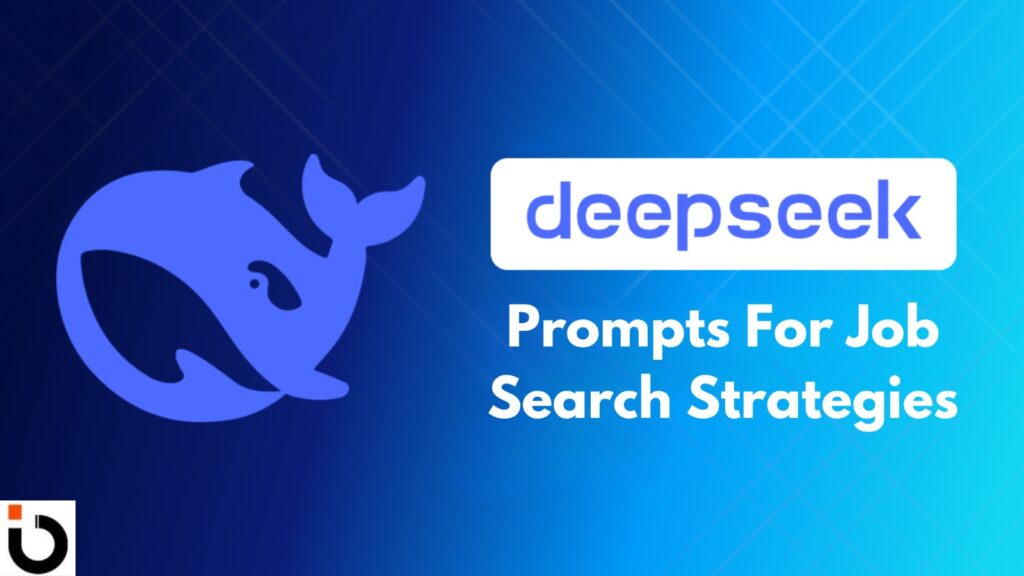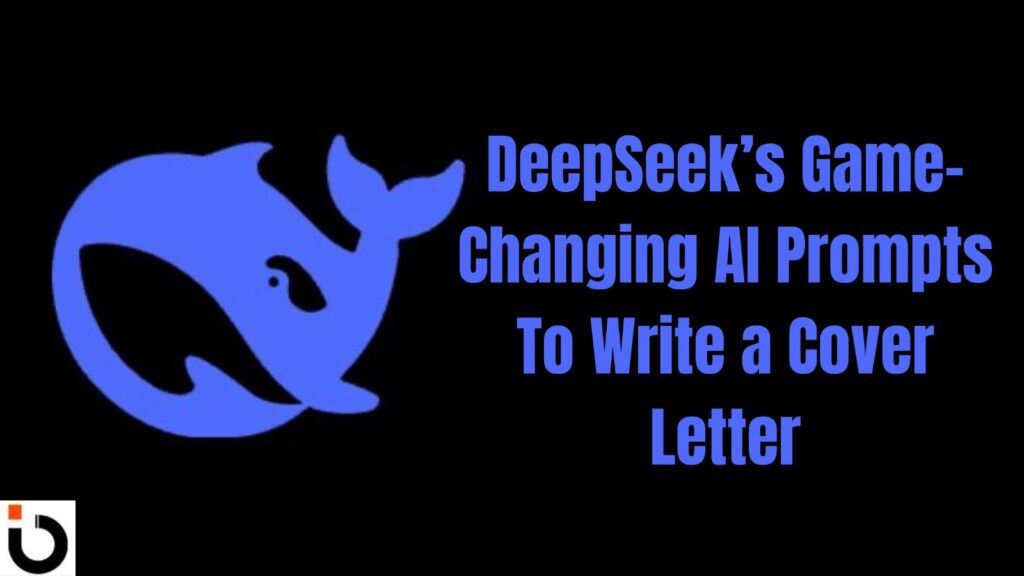The job market has evolved into a high-stakes arena where standing out requires more than just a polished resume or a generic LinkedIn profile. With AI reshaping hiring processes and remote opportunities expanding globally, job seekers need smarter, data-driven strategies to cut through the noise. Enter DeepSeek Prompts—a game-changing AI tool designed to streamline every phase of your job search, from crafting standout applications to acing virtual interviews.
In this guide, we’ll explore actionable prompts to help you optimize resumes, tailor cover letters, network strategically, and prepare for interviews with precision. Whether you’re pivoting careers, reentering the workforce, or aiming for a promotion, these AI-powered strategies will help you navigate the complexities of today’s job market.
Table of Contents
ToggleWhy Traditional Job Search Methods Are Falling Short
The average corporate job posting attracts 250+ applications, yet only 2% of candidates land an interview. Why? Hiring managers increasingly rely on AI tools like applicant tracking systems (ATS) to filter resumes, while human recruiters prioritize candidates who demonstrate hyper-relevant skills and cultural alignment. Generic tactics—like mass-applying with the same resume—no longer work.
DeepSeek Prompts bridges this gap by helping you:
Personalize applications to match job descriptions and company values.
Highlight transferable skills for career changers.
Optimize LinkedIn profiles to attract recruiters.
Prepare compelling answers to behavioral interview questions.
Let’s break down how to use these prompts effectively.
1. Crafting Resumes That Beat ATS Filters
ATS software rejects 75% of resumes before they reach a human. To avoid the “black hole,” use DeepSeek Prompts to:
Prompt 1:
“Generate resume bullet points that align my experience in [Your Industry] with the keywords in [Job Title] job descriptions.”
Example Output:
Before: Managed social media accounts.
After: Increased LinkedIn engagement by 40% through data-driven content strategies, aligning with [Company]’s focus on brand visibility.
Why It Works: This integrates role-specific terms (e.g., “data-driven,” “brand visibility”) while quantifying achievements.
Prompt 2:
“Identify soft skills from my volunteer work that are relevant to a [Target Role] position.”
Example Output:
Coordinated cross-functional teams during community fundraisers → Demonstrates leadership and project management skills.
Pro Tip: Use terms like “collaborative problem-solving” or “stakeholder engagement” to mirror ATS-friendly language.
2. Writing Cover Letters That Showcase Fit
A tailored cover letter can boost your interview chances by 50%. Use these prompts to move beyond templates:
Prompt 3:
“Help me connect my background in [Current Field] to the responsibilities of a [Target Role] at [Company].”
Example Output:
“My experience optimizing supply chain workflows in manufacturing directly translates to your logistics coordinator role, where efficiency and cost reduction are priorities.”
Why It Works: It positions past experience as a solution to the employer’s needs.
Prompt 4:
“Draft a compelling opening paragraph that references [Company]’s mission statement on sustainability.”
Example Output:
“As a longtime admirer of [Company]’s commitment to reducing carbon footprints, I’m excited to apply my expertise in renewable energy project management to advance your 2030 sustainability goals.”
Pro Tip: Mention specific projects or values from the company’s website to show genuine interest.
3. Optimizing LinkedIn Profiles for Recruiter Searches
87% of recruiters use LinkedIn to source candidates. Make your profile irresistible with these prompts:
Prompt 5:
“Rewrite my LinkedIn headline to highlight expertise in [Skill] and [Industry].”
Example Output:
Before: Marketing Professional
After: Content Marketing Strategist | Driving 10x Growth for SaaS Brands Through SEO & Data Storytelling
Why It Works: It incorporates niche keywords (“SaaS,” “SEO,” “data storytelling”) that recruiters search for.
Prompt 6:
“Create a LinkedIn ‘About’ section that blends my technical skills in [Field] with leadership philosophy.”
Example Output:
“Certified data analyst with 8+ years of transforming raw metrics into actionable insights. Passionate about mentoring teams to leverage analytics for customer-centric decision-making.”
Pro Tip: Include phrases like “customer-centric” or “agile workflows” to align with trending industry priorities.
4. Preparing for Interviews with Confidence
Behavioral interviews assess how you’ve handled past challenges. Use DeepSeek to structure memorable answers:
Prompt 7:
“Help me frame a story about overcoming a workplace conflict using the STAR method (Situation, Task, Action, Result).”
Example Output:
Situation: Disagreement between sales and product teams over feature prioritization.
Action: Facilitated a workshop to align both teams on customer feedback data.
Result: Launched a feature that increased user retention by 25%.
Why It Works: STAR-formatted answers are 60% more likely to resonate with interviewers.
Prompt 8:
“Generate questions to ask hiring managers that reflect my research on [Company]’s recent mergers.”
Example Output:
“How will the recent acquisition of [Company X] impact cross-departmental collaboration in this role?”
Pro Tip: Asking informed questions signals strategic thinking and enthusiasm.
5. Networking Like a Pro(Even If You're Introverted)
70% of jobs are filled through networking. Use AI to craft authentic outreach messages:
Prompt 9:
“Draft a LinkedIn message requesting an informational interview with a [Industry] professional, emphasizing shared connections.”
Example Output:
“Hi [Name], I noticed we’re both connected with [Mutual Contact] and admire your work in [Field]. Would you have 15 minutes to share advice on transitioning into [Role]?”
Why It Works: Personalized references increase response rates by 34%.
Prompt 10:
“Help me write a follow-up email after a conference, referencing [Speaker’s Topic].”
Example Output:
“Hi [Name], I loved your insights on AI-driven HR tools at [Event]. I’d love to discuss how your strategies could apply to my current work in talent acquisition.”
Pro Tip: Use phrases like “loved your insights” instead of “enjoyed your talk” to sound more genuine.
Final Tip: Stay Agile and Keep Iterating
The job search is rarely linear. Use DeepSeek Prompts to:
Analyze rejection patterns (e.g., “Identify common reasons my applications aren’t converting to interviews”).
Refresh stale profiles (e.g., “Update my resume headline for a pivot from teaching to corporate training”).
Track industry trends (e.g., “List emerging skills in UX design for 2024”).
Conclusion: Future-Proof your Career with AI-Driven Startegies
Job searching in the digital age demands creativity, adaptability, and strategic thinking. By leveraging DeepSeek Prompts to personalize applications, optimize profiles, and prepare for interviews, you’ll not only stand out but also build habits that serve your career long-term. Remember, the goal isn’t just to land a job—it’s to position yourself for roles that align with your growth and values.
Ready to transform your job search? Start experimenting with these prompts today and watch opportunities unfold.
FAQs: Deepseek prompts for Job Search Strategies
1. How can DeepSeek Prompts help me optimize my resume for ATS systems?
DeepSeek Prompts analyzes job descriptions and industry trends to identify keywords, skills, and formatting preferences that align with applicant tracking systems (ATS). By inputting your experience and target role, the tool generates tailored bullet points that emphasize quantifiable achievements (e.g., “Boosted sales by 30% through CRM optimization”) while integrating ATS-friendly terms like “cross-functional collaboration” or “process automation.”
2. I’m switching careers. How do I highlight transferable skills using this tool?
Use prompts like:
“Identify transferable skills from my background in [Current Industry] for a [Target Role] position.”
DeepSeek will map your past responsibilities to the new role—for example, translating “managed volunteer events” into “project management and stakeholder coordination.” It also suggests industry-specific jargon to help you sound like an insider, even as a career changer.
3. Can DeepSeek assist with virtual interview preparation?
Absolutely! The tool generates behavioral interview answers using the STAR method (Situation, Task, Action, Result) and crafts questions to ask employers based on company research. For example:
“Create a response to ‘Tell me about a time you failed’ for a project management role.”
You’ll get structured, impactful stories that showcase problem-solving and resilience.
4. How do I make my LinkedIn profile stand out to recruiters?
DeepSeek Prompts helps optimize your headline, About section, and activity posts with keywords recruiters search for (e.g., “digital marketing strategist” or “agile Scrum master”). Try:
“Rewrite my LinkedIn About section to emphasize leadership in [Industry] and expertise in [Skill].”
The output will balance professionalism with personality, making your profile both searchable and engaging.
5. What if I’m introverted and hate networking?
The tool drafts warm, concise outreach messages for LinkedIn or email. For example:
“Write a follow-up message to a contact I met at [Event], referencing their talk on [Topic].”
DeepSeek avoids generic phrases like “Let’s connect!” and instead focuses on shared interests or mutual connections to build authentic relationships.
6. Can it help me negotiate job offers or benefits?
While the blog focuses on pre-offer strategies, DeepSeek can still frame your value proposition. Use prompts like:
“Help me articulate my accomplishments to justify a higher starting salary.”
It will generate data-driven talking points, such as “Delivered $500K in cost savings last year, exceeding team goals by 20%.”
7. How does DeepSeek stay updated on industry trends?
The AI tool is trained on real-time job market data, including emerging skills (e.g., “AI prompt engineering”), hiring trends, and employer priorities. Use prompts like:
“List the top 5 skills for UX designers in 2024 based on current job postings.”
This ensures your applications reflect what employers want now.
8. Is DeepSeek suitable for entry-level candidates?
Yes! The tool helps entry-level users reframe internships, coursework, or volunteer work as relevant experience. For example:
“Turn my college leadership role into a resume entry for a marketing coordinator job.”
You’ll get outputs like: “Led a team of 10 to execute campus marketing campaigns, increasing event attendance by 60%.”
9. How do I handle rejection or ghosting during my job search?
Use DeepSeek to analyze patterns:
“Identify common gaps in my applications based on past rejections.”
The AI might highlight issues like “resume lacks industry-specific keywords” or “cover letters not tailored to company values.” It then suggests fixes to improve future submissions.
10. Can I use DeepSeek Prompts for remote or global job searches?
Yes. The tool adapts to regional job markets and remote work trends. For instance:
“Adjust my resume for a remote software developer role in the EU market.”
It will recommend skills like “asynchronous communication” or certifications valued in your target region (e.g., “GDPR compliance”).
11. What makes DeepSeek different from other job search tools?
Unlike generic resume builders, DeepSeek uses generative AI to craft hyper-personalized content. It doesn’t just suggest edits—it teaches you to think like a hiring manager. For example, prompts like “How would a recruiter in [Industry] phrase this skill?” help you speak their language and stand out.




